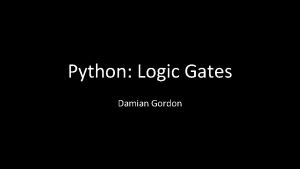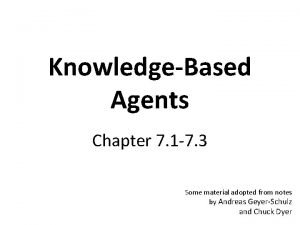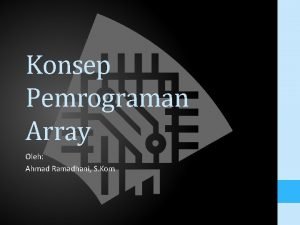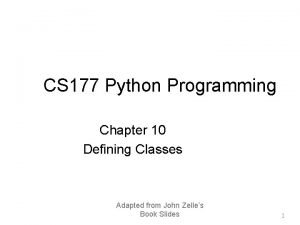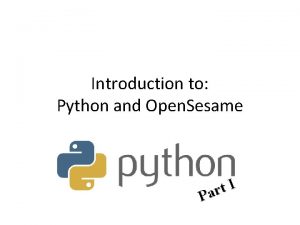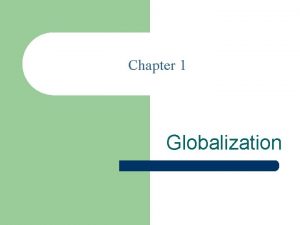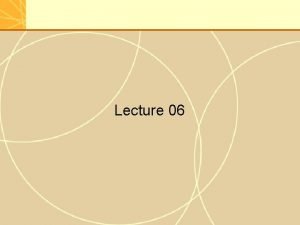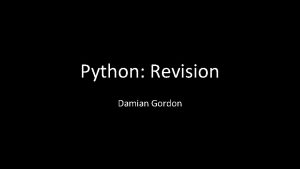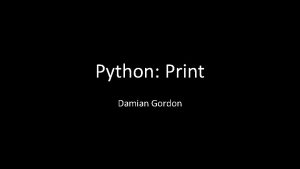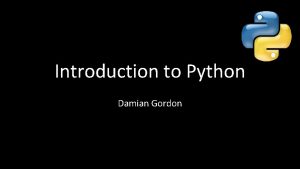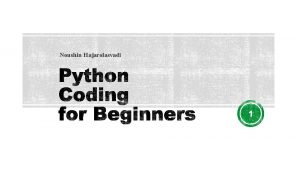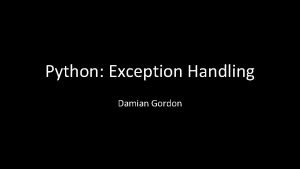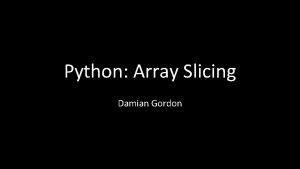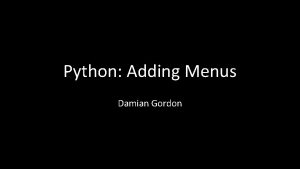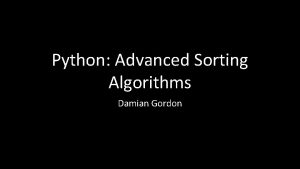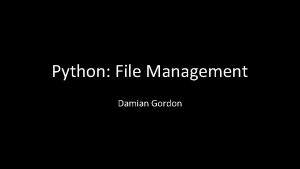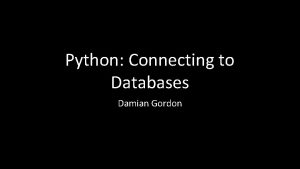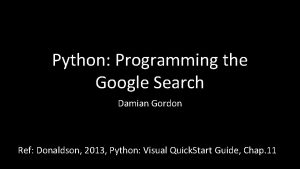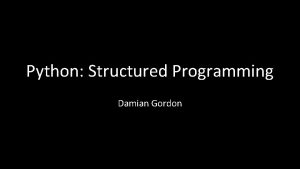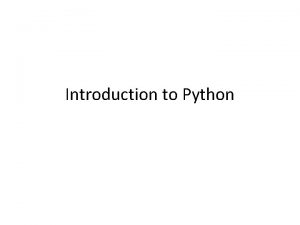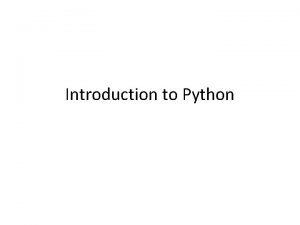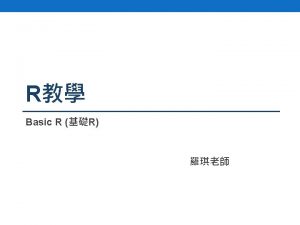Introduction to Python Damian Gordon printHello World PROGRAM








































![# PROGRAM Sequential. Search: Age = [44, 23, 42, 33, 18, 54, 34, 18] # PROGRAM Sequential. Search: Age = [44, 23, 42, 33, 18, 54, 34, 18]](https://slidetodoc.com/presentation_image/297a34fc3afb3c1fa6c2d37c251c2702/image-41.jpg)



![# PROGRAM Bubblesort: Age = [44, 23, 42, 33, 18, 54, 34, 16] for # PROGRAM Bubblesort: Age = [44, 23, 42, 33, 18, 54, 34, 16] for](https://slidetodoc.com/presentation_image/297a34fc3afb3c1fa6c2d37c251c2702/image-45.jpg)
![# PROGRAM Selection. Sort: Age = [44, 23, 42, 33, 18, 54, 34, 16] # PROGRAM Selection. Sort: Age = [44, 23, 42, 33, 18, 54, 34, 16]](https://slidetodoc.com/presentation_image/297a34fc3afb3c1fa6c2d37c251c2702/image-46.jpg)

![Multi-dimensional Arrays • Or like this: Ages = [[2, 6, 3], [7, 5, 9]] Multi-dimensional Arrays • Or like this: Ages = [[2, 6, 3], [7, 5, 9]]](https://slidetodoc.com/presentation_image/297a34fc3afb3c1fa6c2d37c251c2702/image-48.jpg)
- Slides: 48

Introduction to Python Damian Gordon

print(“Hello, World”)

# PROGRAM Hello. World. Program. Joined: print(“Hello, World” + “ I’m here”) # END.

# PROGRAM Hello. World. Program 10 Times: print(“Hello, World” * 10) # END.

Code Description \ Print a backslash ’ Print a single quote ” Print a double quote a Play a beep n Print a new line t Print a tab

# PROGRAM Adding. Numbers: print(10 + 7) # END.

Some Simple Maths • Division is a lot cooler, we can do three kinds of division, – Regular Division – Integer Division – Division Remainder

# PROGRAM Regular. Division: print(“ 10 / 7 = “, 10 / 7) # END.

# PROGRAM Regular. Division: print(“ 10 / 7 = “, 10 / 7) # END. This should give us: 1. 428571

# PROGRAM Integer. Division: print(“ 10 // 7 = “, 10 // 7) # END.

# PROGRAM Integer. Division: print(“ 10 // 7 = “, 10 // 7) # END. This should give us: 1

# PROGRAM Integer. Division: print(“ 10 // 7 = “, 10 // 7) # END. This should give us: 1 which is how many times 7 divides evenly into 10

# PROGRAM Division. Remainder: print(“ 10 % 7 = “, 10 % 7) # END.

# PROGRAM Division. Remainder: print(“ 10 % 7 = “, 10 % 7) # END. This should give us: 3

# PROGRAM Division. Remainder: print(“ 10 % 7 = “, 10 % 7) # END. This should give us: 3 which is what is left over when we divide 7 into 10

# PROGRAM Variable. Print: x = 6 print(x) # END.

# PROGRAM Add. One. Variable. Print: x = 6 print(x + 1) # END.

# PROGRAM Print. Message: print(“Please input a message: ”) New. Msg = input() print(New. Msg) # END.

# PROGRAM Convert. From. Celsius. To. Fahrenheit: print(“Please input your temperature in C: ”) Input. Val = int(input()); print(“That temperature in F is: ”) print((Input. Val *2) + 30) # END.

Convert Description int(x) Convert variable into an integer, e. g. x = “ 10” int(x) Convert variable into a real e. g. x = “ 10. 5” float(x) Convert variable into an string, e. g. x = 10 str(x) float(x) str(x) Result 10 10. 5 “ 10”

Using Variables • The following words cannot be used as variable names: and as assert break del elif else except from global if import not or pass print class continue def exec finally for in is lambda raise return try while with yield

Python: IF statement • In Python the general form of the IF statement is as follows: if CONDITION: STATEMENT(S) else: STATEMENT(S)

# PROGRAM Simple. If. Statement: x = 6 y = 7 if x > y: # THEN print(“x is bigger”) else: print(“y is bigger”) # ENDIF; # END.

# PROGRAM Is. Odd. Or. Even: x = int(input(“Please input the numbern”)) if (x % 2) != 0: # THEN print(x, “is odd”) else: print(x, “is even”) # ENDIF; # END.

Operator Description != is not equal to == is equal to > is greater than < is less than >= is greater than or equal to <= is less than or equal to

# a b c PROGRAM Bigger. Of. Three: = int(input(“Please input the first valuen”)) = int(input(“Please second the second valuen”)) = int(input(“Please second the third valuen”)) if a > b: # THEN if a > c: # THEN print(a, else: print(c, # ENDIF; else: if b > c: # THEN print(b, else: print(c, # ENDIF; # END. “is bigger than”, b, “ and ”, c) “is bigger than”, a, “ and ”, b)

Python: IF-ESIF statement • In Python the general form of the IF-ESIF statement is as follows: if CONDITION: STATEMENT(S) elif CONDITION: STATEMENT(S) else: STATEMENT(S)

# PROGRAM Multi. Choice. Question: Input. Value = input("Please input your answer: n") if Input. Value == "a": # THEN print("Wrong Answer") elif Input. Value == "b": # THEN print("Wrong Answer") elif Input. Value == "c": # THEN print("Right Answer") elif Input. Value == "d": # THEN print("Wrong Answer") else: print("Bad Option") # ENDIF; # END.

Python: WHILE loop • The WHILE loop works as follows: while CONDITION: STATEMENTS

# PROGRAM Print 1 To 5: a = 1 while a != 6: # DO print(a) a = a + 1 # ENDWHILE; # END.

# PROGRAM Sum 1 To 5: a = 1 total = 0 while a != 6: # DO total = total + a a = a + 1 # ENDWHILE; print(total) # END.

Python: WHILE loop • The FOR loop works as follows: for RANGE: STATEMENTS

# PROGRAM Print 1 To 5 For: for a in range(1, 6): # DO print(a) # ENDFOR; # END.

# PROGRAM Check. Prime: a = int(input("Please input value: ")) b = a - 1 Is. Prime = True while b != 1: # DO if a % b == 0: # THEN Is. Prime = False # ENDIF; b = b - 1 # ENDWHILE; if Is. Prime: # THEN print(a, "is a prime number") else: print(a, "is not a prime number") # ENDIF; # END.

# PROGRAM Fibonacci. Numbers: a = int(input("Please input value: ")) First. Num = 1 Second. Num = 1 while a != 1: # DO total = Second. Num + First. Num = Second. Num = total a = a - 1 # ENDWHILE; print(total) # END.

############# # Prime Checking Module # ############# def Is. It. Prime(): a = int(input("Please input value: ")) b = a - 1 Is. Prime = True while b != 1: # DO if a % b == 0: # THEN Is. Prime = False # ENDIF; b = b - 1 # ENDWHILE; return Is. Prime # END Is. It. Prime.

######## # Main Program # ######## # PROGRAM Check. Prime: if Is. It. Prime() == True: # THEN print("Prime number") else: print("Not a prime number") # ENDIF; # END.

Arrays • To declare an zero-filled array in Python we can do the following: Age = [0 for x in range(8)]

Arrays • To declare an array with values in Python: Age = [44, 23, 42, 33, 16, 54, 34, 18]

# PROGRAM Sample. Array. Prog: Age = [44, 23, 42, 33, 16, 54, 34, 18] for a in range(0, 8): # DO print(Age[a]) # ENDFOR; # END.
![PROGRAM Sequential Search Age 44 23 42 33 18 54 34 18 # PROGRAM Sequential. Search: Age = [44, 23, 42, 33, 18, 54, 34, 18]](https://slidetodoc.com/presentation_image/297a34fc3afb3c1fa6c2d37c251c2702/image-41.jpg)
# PROGRAM Sequential. Search: Age = [44, 23, 42, 33, 18, 54, 34, 18] for a in range(0, len(Age)): # DO if Age[a] == 18: # THEN print("User", a, "is 18") # ENDIF; # ENDFOR; # END.

Part 1 of 3 # PROGRAM Binary. Search: Age = [16, 18, 23, 31, 33, 34, 46, 54] Search. Val = int(input("Please input the search value: ")) first = 0 last = len(Age) Is. Found = False

while first <= last and Is. Found == False: # DO index = (first + last) // 2 if Age[index] == Search. Val: # THEN Is. Found = True print("Value found") elif Age[index] > Search. Val: # THEN last = index - 1 else: first = index + 1 # ENDIF; # ENDWHILE; Part 2 of 3

Part 3 of 3 if Is. Found == False: # THEN print("Value not in array") # ENDIF; # END.
![PROGRAM Bubblesort Age 44 23 42 33 18 54 34 16 for # PROGRAM Bubblesort: Age = [44, 23, 42, 33, 18, 54, 34, 16] for](https://slidetodoc.com/presentation_image/297a34fc3afb3c1fa6c2d37c251c2702/image-45.jpg)
# PROGRAM Bubblesort: Age = [44, 23, 42, 33, 18, 54, 34, 16] for outerindex in range(0, len(Age)): # DO for index in range(0, len(Age)-1): # DO if Age[index+1] < Age[index]: # THEN Temp. Value = Age[index+1] = Age[index] = Temp. Value # ENDIF; # ENDFOR; print(Age) # END.
![PROGRAM Selection Sort Age 44 23 42 33 18 54 34 16 # PROGRAM Selection. Sort: Age = [44, 23, 42, 33, 18, 54, 34, 16]](https://slidetodoc.com/presentation_image/297a34fc3afb3c1fa6c2d37c251c2702/image-46.jpg)
# PROGRAM Selection. Sort: Age = [44, 23, 42, 33, 18, 54, 34, 16] for outerindex in range(0, len(Age)): # DO Min. Val. Location = outerindex for index in range(outerindex, len(Age)): # DO if Age[index] < Age[Min. Val. Location]: # THEN Min. Val. Location = index # ENDIF; # ENDFOR; if Min. Val. Location != outerindex: Age[outerindex], Age[Min. Val. Location] = Age[Min. Val. Location], Age[outerindex] # ENDFOR; print(Age) # END.

Multi-dimensional Arrays • We declare a multi-dimensional array as follows: Ages = [[0 for x in range(8)]
![Multidimensional Arrays Or like this Ages 2 6 3 7 5 9 Multi-dimensional Arrays • Or like this: Ages = [[2, 6, 3], [7, 5, 9]]](https://slidetodoc.com/presentation_image/297a34fc3afb3c1fa6c2d37c251c2702/image-48.jpg)
Multi-dimensional Arrays • Or like this: Ages = [[2, 6, 3], [7, 5, 9]]
 Damian gordon
Damian gordon Index.of.secret
Index.of.secret Damian gordon
Damian gordon Damian sturzaker
Damian sturzaker Padre damian de veuster 2215
Padre damian de veuster 2215 Ejemplo de biografía de una persona
Ejemplo de biografía de una persona Padre damian de veuster 2215 vitacura
Padre damian de veuster 2215 vitacura Damian clancy
Damian clancy Damian krysztofik
Damian krysztofik Dr damian folch
Dr damian folch Damian urbańczyk żona
Damian urbańczyk żona Christophe damian
Christophe damian Damian mac
Damian mac What did fray damian massanet do
What did fray damian massanet do Padre damian de veuster 2215 vitacura
Padre damian de veuster 2215 vitacura Padre damian de veuster 2215
Padre damian de veuster 2215 Damian harding
Damian harding Damian urbańczyk wikipedia
Damian urbańczyk wikipedia Damian topolski
Damian topolski Oscar sandoval md
Oscar sandoval md Damian heywood
Damian heywood Melissa damian
Melissa damian Damian marli
Damian marli Damian czudek
Damian czudek Dana damian
Dana damian Iru academy
Iru academy Python logic gate simulator
Python logic gate simulator 666 rule powerpoint
666 rule powerpoint Knowledge based agent
Knowledge based agent Python stack and queue
Python stack and queue Contoh program array 2 dimensi python
Contoh program array 2 dimensi python Python menu driven program
Python menu driven program Program gerobak fried chicken python
Program gerobak fried chicken python Python program
Python program Create python program
Create python program Python programming an introduction to computer science
Python programming an introduction to computer science Site:slidetodoc.com
Site:slidetodoc.com Pumpkin new world or old world
Pumpkin new world or old world Real world vs digital world
Real world vs digital world The highest of the forms in real world are:
The highest of the forms in real world are: Ap world history chapter 25 africa and the atlantic world
Ap world history chapter 25 africa and the atlantic world The changing world output and world trade picture
The changing world output and world trade picture Countries michael jackson visited
Countries michael jackson visited The paper seeming boy with red eyes mean the boy is
The paper seeming boy with red eyes mean the boy is Belled flowery tyrolese valley
Belled flowery tyrolese valley World world
World world The changing world output and world trade picture
The changing world output and world trade picture Hello world program in c
Hello world program in c Android studio hello world program
Android studio hello world program


























